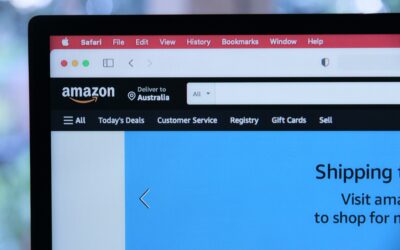What Is Animated Video Production And How Does It Work?
If you’re like most people, you probably think of animated movies when you hear the word “animation.” But did you know that animation is used for a lot more than just movies?
Animation is used in different ways, from TV commercials to online videos. So what is an animated video, and how does it work? Keep reading to find out.
What Is Animated Video Production?
Producing a video with animation involves creating a video (using animation) rather than filming in live-action. Animated videos can be used for all sorts of things, from marketing to education to entertainment.
Animation can create videos of anything, from a simple product demonstration to a full-length movie. Animators use various software and tools to make their animations, including drawing software, 3D modeling software, and compositing software.
How Does Animated Video Production Work?
Animated videos work by creating a series of still images then put together to create a video. Animators use software to create these images, and then they are put together to create the video. This process includes many things and can be done by hand or by using special software that automates the process.
Steps of Creating a Video with Animation
Creating a video typically follows several steps, depending on the project. The video production process includes:
Research
The first step is to research the project and gather reference materials. This may include finding appropriate images, videos, and audio clips in the animation.
Concept And Scripting
The next step is to develop a script. This will lay out the basic storyline and timing of the video. Depending on the project, this may also include writing voiceover or dialogue for characters in the video. This can be done by the animator or by someone else on the team. The script will outline the story or message that the animation will tell.
Storyboard
After the script is written, a storyboard is usually created. This is a series of sketches that show how each scene in the animation will look. This can help ensure that the animator has a clear idea of what each shot will be and how it will flow. It can help visualize the finished product and ensure that everything flows correctly. The designer may also create character designs and other artwork at this stage.
Storyboarding has some similarities to comic book scripting. In some cases, a storyboard artist will work with the director of an animated film to help visualize the scenes and define how they will look on screen.
Styling
Once the storyboard is approved, the animator will start to create the actual animation. This may involve creating keyframes and adding movement and effects. The animator will work to create a smooth and cohesive final product. To do this, they will use animation techniques such as easing, bouncing, and anticipation.
Easing is when an object gradually speeds up or slows down. Bouncing is when an object “bounces” into place, such as a bouncing ball. Anticipation means that the animator creates a sense of tension in the animation so that things move in a specific direction before they do. For example, if a character throws a ball, there may be a slight pause as nature draws back its arm before the ball leaves its hand.
Voiceover And Music
Once the animation is complete, it is usually synced up with voiceover and music. This may be done by the animator or by someone else on the team. The goal is to create a cohesive and polished final product. Different types of music may be needed for different types of marketing videos. The most common types of music for animated videos are upbeat and cheerful.
Animation
There are many different types of animation that an animator can create. These include 2D, 3D, and stop-motion animations. Each one has its unique look and feel.
2D Animation is created using a series of flat drawings stacked on top of each other to give the effect of movement. This type is prevalent in children’s television shows and movies. It is also widely used in marketing videos.
3D Animation is created using 3D models brought to life through animation software. This type of animation can be very time-consuming, so it may not be the most cost-effective way to create an animated video for a marketing campaign.
Stop-motion animation is created by taking a series of photos of an object in different positions and then stitching them together to create the illusion of movement. This type of animation is often used for commercials and short films.
Sound Effects
Sound effects are often needed to provide additional realism in animation production. These are created by the animator or another member of the team. This can include character voices, background noises at various scenes, and sound effects during transitions.
Effects are also typically added to animated video styles. These may include things like motion trails, motion graphics, zooms, fades, splashes, and more.
Motion trails are created by adding a long line or trail to an object as it moves. This can create a more fluid and professional look to the animation. Zooms are used to develop a sense of movement and power. Fades are used to make sense of smooth transitions between scenes. Splashes are often used to add excitement or tension to an animation explainer video.
Delivering The Product
Once the video is finished, it needs to be delivered to the client. This can involve uploading it to a video hosting site or sending it as an email attachment. The client will then need to review and approve the final product and post on social media and other platforms. If any changes are required, they will be made, and the process will start over again until the client is satisfied.
Tips For Creating Animated Product Characters
When creating an animated product video, make sure it fits your company’s brand. It should be professional and polished while still engaging and interesting to viewers. The best way to accomplish this is by having high-quality drawings that are detailed enough to look realistic but not overly detailed so that they become distracting. You can also hire a video production company for the best results.
Know Your Audience
Take time to consider your target audience and how they will react to the product. Animated characters can evoke a variety of emotions. They may be happy and cheerful or serious and dramatic. Think about what kind of tone you want to set in your video and pick music that matches that tone.
What are their interests? What type of language do they respond to? What mood are you trying to create? Once you have a good idea of who you target, it will be easier to create video content that appeals to them.
Practice Your Act
Once you are ready to get started with your explainer video productions, it can be beneficial to record yourself talking about the product. Listen to your voice and practice your delivery until it matches what you are trying to accomplish with your video. This will make it easier for the animator to visualize what movements would go best with the words, especially if they are not familiar with the product.
Be Prepared To Make Changes
No matter how careful you are, changes will likely need to be made once the final product is delivered to the client. Be prepared to make revisions until the client is delighted. This can involve everything from changing sound effects, animation style to entire reworking scenes.
Keep It Short But Informative
Product videos do not need to belong to be effective. Most viewers will lose interest if a video is too long. Try to keep the video around two minutes or less. However, this does not mean that you should leave out important information. Be sure to include all the key points that you want your audience to remember.
Working with a team that specializes in creating product videos can be beneficial. They can help you pick the suitable scenes and music to ensure each location has essential information but does not drag on too long.
Create A Relevant Message
When creating an animated explainer video, it is essential to develop a good story. You need to make sure that each scene will bring value to your message, or it might end up confusing the audience. Don’t leave out essential information just because you think it’s boring – this can confuse your audience even more.
Work From A Script
It’s essential to work from a script when creating animated characters. This will help ensure that each scene is relevant and flows correctly. You can use a software program like Final Draft to help you write your script, or you can handwrite it if you prefer.
Writing out the complete script will help you ensure that all of the information is included in the animation. This will also allow you to check for any holes in logic or gaps in continuity.
Use High-Quality Visuals
To create a good live action animation, you must have high-quality visuals. If you are working with a team of animators, be sure that they all have access to the best drawing tools and software available. This will ensure that the animation looks professional and polished. You don’t need to have a big budget to create high-quality visuals, but you need to be careful about your choices.
Choose The Right Music
Music can play a significant role in setting the tone for your product video production services. If you want your animation to be cheerful and fun, pick bright and upbeat music. On the other hand, if you’re creating a more severe tone, choose slower and sad music. Make sure the music matches the story and images you are using in your animation according to your video styles.
Be Consistent
One of the most important things to remember when creating an animation is consistency. This means that you need to make sure the visuals, sound effects, and music match each other. If you are using different a different style for each of these elements, it will be very jarring for the viewer.
Animated product characters can be a great way to promote your product or service. This type of video is unique because it combines elements from film, animation, and marketing. It can take some time to learn how to create compelling graphics animation, but once you get the hang of it, then this type of video can provide some great benefits.




